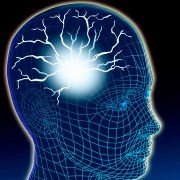 Photo: Getty Images
Photo: Getty Images
Throughout the body are blood vessels which transport blood. When a weak area in the blood vessel’s wall balloons out, this is called an aneurysm.
When this ballooning or bulging of a blood vessel’s wall occurs in the brain, it is called a brain aneurysm or cerebral aneurysm. This type of aneurysm is more common in adults and women, according to the National Institute of Neurological Disorders and Stroke.
MedlinePlus noted that about 5 percent of the population has a brain aneurysm. But for many people, these cerebral aneurysms remain undisturbed. For others, the aneurysm can rupture or cause symptoms if it puts pressure on another structure in the brain.
Causes and Risk Factors of a Brain Aneurysm
An aneurysm of the brain occurs when there is degeneration or thinning of the blood vessel’s walls. In some cases, the aneurysm is present at birth. Injury may occur to the blood vessel, resulting in the weakening of its walls.
Risk factors for a brain aneurysm can be present at birth or occur later in a person’s life. For example, risk factors that are present at birth include inherited disorders, such as polycystic kidney disease or inherited connective tissue disorders, like Ehlers-Danlos syndrome.
If a person has an abnormally narrow aorta, she has a higher risk of having a brain aneurysm. Other risk factors that are present at birth include a family history of a brain aneurysm and cerebral arteriovenous malformation.
As a person gets older, other risk factors may occur. For example, in women, lower estrogen levels after menopause increases the risk for an aneurysm of the brain, according to MayoClinic.com. Certain lifestyle choices, such as smoking, drug abuse and heavy alcohol consumption, are risk factors for a cerebral aneurysm. Other risk factors of a brain aneurysm include older age, hypertension, arteriosclerosis, certain blood infections and head injury.
Symptoms of a Brain Aneurysm
Some people with a brain aneurysm may not have symptoms. But if the aneurysm ruptures, leaks or puts pressure on another part of the brain, it can result in symptoms.
Unruptured Brain Aneurysm Symptoms
If an unruptured brain aneurysm is large and puts pressure on nearby brain tissue or nerves, it can result in some symptoms. For example, a patient may have visual problems, such as a dilated pupil, double vision or a drooping eyelid. Pain either behind or above the eye may occur. An unruptured brain aneurysm may cause sensation changes on one side of a patient’s face, such as numbness.
Leaking Brain Aneurysm Symptoms
Sometimes, a brain aneurysm may “leak,” and a small amount of blood comes from the aneurysm. This leaking, also called a sentinel bleed, may cause the patient to have an extremely severe headache which comes on suddenly. The MayoClinic.com noted that after a brain aneurysm leaks, a more severe rupture almost always occurs.
Ruptured Brain Aneurysm Symptoms
A ruptured brain aneurysm is a medical emergency, in which there is bleeding in the brain, or a hemorrhagic stroke. The hallmark symptom is a severe headache that is sudden, and which is often described as “the worse headache of my life,” according to MedlinePlus. In addition to a severe headache, a ruptured brain aneurysm may cause a stiff neck, sensitivity to light, nausea and vomiting.
Ruptured brain aneurysm symptoms can include an alteration in the patient’s mental status, resulting in confusion, sleepiness, lethargy, stupor or a loss of consciousness. Some patients may have seizures. Other symptoms of a ruptured brain aneurysm include a drooping eyelid, decreased sensation in the body, muscle weakness and speech impairment.
References
MedlinePlus Medical Encyclopedia. Aneurysm in the Brain. Web. 12 December 2011
http://www.nlm.nih.gov/medlineplus/ency/article/001414.htm
MayoClinic.com. Brain Aneurysm. Web. 12 December 2011
http://www.mayoclinic.com/health/brain-aneurysm/DS00582/METHOD=print
National Institute of Neurological Disorders and Stroke. Cerebral Aneurysms Information Page. Web. 12 December 2011
http://www.ninds.nih.gov/disorders/cerebral_aneurysm/cerebral_aneurysms.htm
Reviewed December 12, 2011
by Michele Blacksberg RN
Edited by Jody Smith



Add a CommentComments
There are no comments yet. Be the first one and get the conversation started!